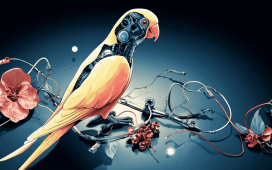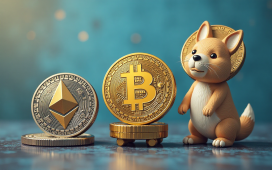Intel Extreme Master Cologne drew a record 39,000 people to watch six of the world’s best Counter-Strike 2 players square off over a $1 million prize pool.
That record was set as the weekend event hit a thrilling conclusion as Team Vitality emerged as Champions in the Grand Final, narrowly beating Navi in overtime with a score of 16 to 14. It was the first time I was able to watch the event in person, and I interviewed Michal Blicharz, one of the original creators of the event, which is known as the Cathedral of Counter-Strike.
Set against the backdrop of the iconic LANXESS arena, this year’s IEM Cologne brought together six of the world’s best Counter-Strike 2 (CS2) teams in the playoffs—MOUZ, G2 Esports, Team Vitality, FaZe Clan, SAW, and Natus Vincere—as they vied for the coveted trophy and a share of the $1 million prize pool.
The tournament drew 39,000 attendees to the Cathedral of Counter-Strike across three days, while over 1,050,000 viewers tuned in online globally to witness Team Vitality claim their first ever IEM Cologne trophy, marking IEM Cologne 2024 as the most-watched non-Major Counter-Strike competition of the year.
Join us for GamesBeat Next!
GamesBeat Next is connecting the next generation of video game leaders. And you can join us, coming up October 28th and 29th in San Francisco! Take advantage of our buy one, get one free pass offer. Sale ends this Friday, August 16th. Join us by registering here.
Team Vitality’s journey to the Championship was paved with hard-fought victories against the world’s best squads. The team faced fierce competition, including MOUZ and G2 Esports, and their Grand Final best-of-five series against Natus Vincere ended in an intense 3-1 victory.
The win marks Team Vitality’s first IEM Cologne title, and a long-awaited victory lap for team captain Dan “apEX” Madesclaire, who appeared at the LANXESS arena’s first-ever IEM event in 2015. With the victory, Team Vitality earned a Championship-level win, bringing them one step closer to claiming an Intel Grand Slam and its $1 million prize. Inside, it was loud with screams, chants and roars. The production cameras for the big screen zeroed in on people reacting to every great play with shock or glee.
“I’m excited to win here with this bunch of boys – this is the best [win] I can ask for and one of the best days of my life,” said Shahar “flameZ” Shushan, in a statement. “It means loads to us. Of course we didn’t have the best year, but this trophy means everything. I’m so grateful to win [it] in front of such a great crowd and in front of one of the best teams in the world right now.”
But the story of IEM Cologne 2024 is not just about the Champions. SAW, the Portuguese team that competed at IEM Cologne for the first time this year made history by representing their country at the Cathedral of Counter-Strike. The underdog squad took dominant games off of The MongolZ, BIG, and FaZe Clan.
Meanwhile, Mathieu “ZywOo” Herbaut stole the show, being named the tournament’s DHL ESL Pro Tour Most Valuable Player (MVP) for his outstanding performance throughout the event. His play was pivotal in securing Team Vitality’s Championship run, particularly in the Grand Final, where their skills were on full display.
IEM Cologne featured three days of fan-centric celebrations, with EFG and an assortment of brand partners playing major roles. EFG’s all-new ESL brand campaign, debuting in Cologne, ushered in a new look for the storied esports organizer and highlighted the players, teams, and fans that have chosen to “Live Legendary” over its nearly 25-year tenure. The brand also announced a partnership renewal with long-time partner DHL, as well as welcoming Logitech and Unilever nutrition brands Knorr and Pot Noodle into the fray. Logitech showed me the athlete lifestyle player’s lounge that it set up in the nearby Radisson Hotel, which came with massage tables, ping pong and other ways for the players to unwind when they weren’t playing critical matches.

This year’s event has raised the bar for what is to come in the Intel Extreme Masters series, including the upcoming IEM Rio, which comes to Rio de Janeiro, Brazil, on October 7-13. For more information or to purchase tickets, visit www.pro.eslgaming.com/tour/cs/rio.
The IEM Cologne 2024 event is run by ESL FACEIT Group (EFG), where Blicherz works. Here’s my edited transcript of our conversation.
GamesBeat: Is it true that you’ve been to 100 of these IEM events now?

Michal Blicharz: This is number 101, yes. Intel Extreme Masters started in 2006. The first finals happened in 2007. It’s been ongoing ever since with multiple events all around the world. We’ve gone all over Europe. We’ve gone to Canada. We’ve gone to multiple places in the United States. We’ve gone to Brazil, Australia, Korea, China, Singapore, Taiwan, Dubai. This tournament has gone to many, many different places.
You can compare it to the Roland-Garros in tennis. It’s one of the Grand Slam events for Counter-Strike, one of the most prestigious. You’re a really big boss if you win this event. And I would say not only in Counter-Strike, but probably across the entire esports industry. The prize pool is $1 million.
GamesBeat: Where did the nickname come from, the Cathedral of Counter-Strike?
Blicharz: We didn’t come up with that. It was given to the event by the fans, for a few reasons. Across the river there’s a very famous cathedral. And the experience is a little bit similar. A lot of people gather for the same purpose. The gods are different, but the purpose is similar.
From a business perspective, a sponsorship perspective, it’s been quite the long road together with Intel. They’ve taken a number of leaps of faith across our relationship. They believed in esports from the start. In 2013, when we changed the model from co-located events–we’d go to a big comic show or a game trade show like E3. We’d just rent out a little piece of E3 and build a stage there. But in 2013 we had the opportunity to go to our own arena, host thousands of people, and not be co-located. We were the show.
Esports at the time was quite small. We were a bit like a sapper. Where I come from we say that a sapper’s job is hard, because one mistake and that’s it. You get to play until the first mistake. That was esports back then, or at least that’s how we felt. The people at Intel who were responsible took what could be seen, from certain angles, as a very big risk, going from co-located to renting out a full arena. It’s gone very well as you can see. We appreciate the fact that our relationship with Intel over the years was built on this level of trust. Somebody was willing to risk their job because we believed and they believed.
GamesBeat: How many people are here this year?

Blicharz: It’s about 13,000. We started in the arena in 2015. The event itself started in 2014, and the first one was co-located with Gamescom. In 2020 it didn’t take place due to COVID. In 2021 it took place in a hotel in Cologne with no fans. Every other one has fully sold out ahead of time here. This is one of the largest recurring esports events in the world.
We had arena events before that had maybe 1,500 people in them. They took place at an arena, but it wasn’t full. The first large-scale mega-arena event in Europe was in 2013 for sure. The League of Legends finals at Galen Center in 2012 was a few months ahead of that. That was the transition period when esports started moving to major sports arenas.
GamesBeat: Do you still hear people talk about an “esports winter,” or do you think that’s behind us now?
Blicharz: It’s an interesting topic for us. We haven’t felt any esports winter. We’ve always sold out at the same pace. We’ve always had continuing success with our ongoing sponsorships, because we continue to deliver the same viewership numbers as the previous year, or higher. We operate in an open ecosystem. The esports winter game titles are typically closed franchise leagues. They tend to have difficulty replacing their talent.
If you create a closed league and all the value is poured into the teams in that specific league, without something like the NCAA fueling it from below, you’re not going to have talent come in. You’re creating a club of 10 teams with millionaires playing for them and no full-time jobs outside that. How can you hope to become a pro player if you don’t have anybody paying you, supporting you? In our ecosystem, which is open, it’s much more like tennis than, say, the NBA. All those franchise league systems seem to be having trouble with an esports winter. Anything that works more like tennis or golf in its annual structure was largely unaffected.
GamesBeat: In your specific role, what’s your day to day like?

Blicharz: My role was originally running Intel Extreme Masters. I was responsible for everything. Right now I’m vice president of special projects. At this event my special project is to be the executive producer for the broadcast. With a team of people, I try to imagine what the experience should be for the opening, the closing. What should ceremonies look like? Which direction should our broadcast go? Things like that.
To be more specific, my pet peeve is body language among the players. Watching an esports event, a default esports event, it’s a bit like watching Spider-Man with all the Peter Parker scenes cut out. We see the mask. We see the avatar. But we don’t really get to see the human. It’s kind of the same in esports. When the players sit down, their faces are covered by the monitor. Their actions are represented by pixels. My job, and the team’s job, is to introduce more Peter Parker back into the movie.
For example, this is why we have such a long catwalk. Just a simple example. At most esports events players go one, two, three, wave, and sit down. That’s not a lot of body language, not a lot of Peter Parker. The long catwalk here is one of the things we do. They’re naked in front of the entire stadium, in the very center of it, and they’re walking so that our eyes are able to take in that body language. Consciously or unconsciously, we pick up and understand the player’s frame of mind. Is that player confident? Would that player rather be somewhere else? Is he cautious? Is he excited? Things like that.
That’s part of the show, because we ultimately want to position the players as humans that the audience can identify with. That’s one thing I’m responsible for. Peter Parker-ing the players.
GamesBeat: What’s your reaction to some of the big events that have gone on lately? We just had the Esports World Cup. That seems like an attempt to take things up another notch.
Blicharz: The Esports World Cup complements the rest of esports in a way the Olympics complements the ATP in Tennis. I don’t think Wimbledon is concerned about the Olympics, nor the U.S. Open or the Australian Open. By the same token, we’re not concerned by the Esports World Cup happening. The experiences are complementary. It’s one more title for a player to win. It’s very lucrative. It’s building its own prestige. We have our own history and tradition here. We have nothing to be ashamed of in front of any tournament in the world.
GamesBeat: What sort of future road map do you see for esports? What do you think is the next milestone?
Blicharz: I know your work. You’ve been around many different esports events.
GamesBeat: I remember watching Dennis Fong play at a Sega GameWorks in Seattle.

Blicharz: You have my respect. I found out about Dennis Fong shortly after he was done playing. In general, when it comes to esports–the reason I bring up your past work, I assume you’ve talked to many people about the future of esports. I would say that if anyone has a very specific prediction for the future of esports, then pardon my French, they’re full of shit.
The reason for that is, esports is inherently tied to video games. The future of video games is based on a couple of things. One, the limitations of hardware, whether it’s networking or computers or consoles. What can the hardware do? That limits the imagination of video game creators. Back when Thresh played, we couldn’t imagine PUBG. That was completely impossible, unimaginable. We’re sitting in a place in time where we can’t imagine the next generation of amazing video games. So the future of esports is tied to video games, and the future of video games is unpredictable. If I could predict what equipment we’ll have, I’d be a startup CEO looking forward to making big money.
We know that this is generational, though. My daughter was born a few months after Intel Extreme Masters Katowice. She was born into a world where arena events for esports are a normal thing. Anybody born in 2013 and later are esports natives. It’s normal to them. When I don’t travel, I enjoy Intel Extreme Masters at home with my kids. I play video games with my kids. That means there’s only going to be more of us. All I can tell you is that it’s going to be bigger.
GamesBeat: I wonder when the traditional sports guys will be able to match their expectations to the business opportunity. Like some other categories, it’s taking longer to get there than some people expected during the days of overhype.

Blicharz: Esports in general has been fueled by investment money. It’s natural that many different blueprints for how to get it right were tried. Frankly, I was expecting the so-called esports winter. I didn’t believe in some of the blueprints that were attempted. Esports throughout the years has gone through rise and correction, rise and correction, rise and correction. With every one of these cycles, we’re getting closer to a healthy business. We just need to try a million blueprints before we find the blueprint. We know the audience is there. We know the fans are there. We need to continue perfecting the recipe. As you can see here, the magic in this arena is undeniable.
The reason we do this–this is not your first arena event. You know what it’s like. We’d like young, talented people from around the world – the Thresh from Australia, the Thresh from Malaysia, the Thresh from Chile – to have a dream and be able to fulfill it here. I don’t think there’s anything better as a gamer–if you’re on this stage, you look up at the screen, and all you see is faces staring back at you. All the lights pointing at you. You have one moment in the lights. You feel it on your skin. You feel it through the headset. You see it with your eyes. If you happen to do something great, the earth shakes.
That’s normally only available to people like Tom Brady or Taylor Swift. We’re trying to make that feeling available to any gamer in the world who has talent and the will to try.
READ SOURCE









